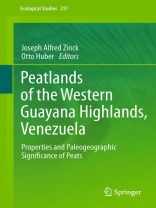The Guayana Highlands in northeastern tropical America, rising from lowland rain forests and savannas up to 3000 m elevation, are characterized by ancient tablelands called tepuis. The peatlands that developed on the tepuis constitute unique and fascinating ecosystems and are the focus of this volume, which starts with an overview of tropical and subtropical peats, followed by an introduction to the geo-ecological features of the Guayana region as a whole, with special emphasis on the diversity of the vegetation cover from lowlands to uplands to highlands. The core subject centers on the properties and dating of the peat deposits and the interpretation of the chronological record in terms of past environmental changes. The well illustrated book will appeal to a broad range of scientists interested in tropical highland peats, including quaternarists, soil scientists, geomorphologists, geographers, geologists, ecologists, botanists, hydrologists, conservationists, and land use planners.
Cuprins
Introduction.- Tropical and subtropical peats: an overview.- The Guayana region and the study areas: geo-ecological characteristics.- Tepui peatlands: setting and features.- Laboratory methods for characterization of peat materials.- Properties and classification of the tepui peats.- Tepui peatlands: age record and environmental changes.- Origin of organic matter leading to peat formation in the southeastern Guayana uplands and highlands.- Synthesis: the peatscape of the Guayana Highlands.- Appendix: Site and profile characteristics.












